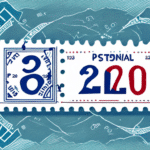Postal Rates Are Decreasing: What It Means for Consumers and Businesses
The U.S. Postal Service has implemented a reduction in postal rates, marking the first decrease in nearly a century. This change is set to provide savings for both consumers and businesses, although the benefits vary depending on mailing habits and the types of services used.
Understanding the Recent Postal Rate Decrease
Effective from April 10, 2023, the U.S. Postal Service has reduced the price of a first-class stamp from 58 cents to 57 cents. While this may seem like a minor adjustment, frequent mailers and businesses that send large volumes can experience significant cumulative savings. For example, a business sending 10,000 first-class letters could save approximately $100 annually.
- Consumers: Individuals sending occasional mail will notice slight savings on everyday postage needs.
- Businesses: Companies with high mailing volumes stand to benefit more substantially from reduced rates.
It's important to note that not all postal services have decreased rates. Prices for packages and international mail might remain the same or even increase, so it's crucial to review specific service changes.
The Historical Context Behind Postal Rate Changes
Postal rates have historically trended upwards due to factors like inflation, operational costs, and increased demand for services. However, recent trends have shifted due to several key factors:
- Decline in Mail Volume: The rise of digital communication has reduced the need for traditional mail services, impacting postal revenue.
- Operational Efficiency: Implementation of cost-cutting measures such as workforce reductions and facility consolidations has lowered operating expenses.
- Regulatory Pressure: The Postal Regulatory Commission has influenced rate adjustments to promote affordability and accessibility.
According to a report by the U.S. Postal Service Office of Inspector General, these measures have been instrumental in enabling the USPS to offer reduced rates.
The Future of the U.S. Postal Service Amid Rate Adjustments
The recent rate decrease is part of a broader strategy for the USPS to remain competitive and sustainable in a rapidly evolving market. Future initiatives include:
- Expansion into E-commerce: Enhancing package delivery capabilities to cater to the growing online shopping sector.
- Technological Integration: Exploring innovations like drone deliveries to improve efficiency and reach.
- Sustainability Efforts: Investing in electric vehicles and energy-efficient practices to reduce environmental impact.
These initiatives are aligned with industry trends and the increasing demand for reliable and eco-friendly postal services.
Strategies for Businesses to Capitalize on Lower Postal Rates
Businesses can leverage the reduced postal rates to optimize their operations and boost profitability. Here are some strategies:
- Bulk Mailing: Utilizing bulk mailing services can significantly lower postage costs for businesses that send large quantities of mail.
- Alternative Shipping Options: Exploring regional carriers or courier services for local deliveries can offer cost-effective shipping solutions.
- Marketing Campaigns: Investing savings from lower postal rates into targeted marketing initiatives, such as direct mail campaigns, can enhance customer engagement.
Implementing these strategies not only reduces costs but also improves overall business efficiency.
The Impact of Postal Rate Changes on E-commerce and Online Retail
The reduction in postal rates has notable implications for the e-commerce sector:
- Lower Shipping Costs: Reduced postage rates can lead to lower overall shipping costs, making online products more competitively priced.
- Increased Accessibility: Lower costs can make online shopping more accessible to a wider range of consumers, potentially increasing sales volumes.
- Enhanced Competition: Smaller e-commerce businesses may find it easier to compete with larger retailers due to more affordable shipping options.
These changes could contribute to a more dynamic and competitive online marketplace, benefiting both consumers and businesses.
Exploring Alternatives to Traditional Postal Services
As postal services evolve, businesses and individuals are increasingly considering alternatives to traditional mailing methods:
- Courier Services: Offering faster and more reliable delivery options with features like real-time tracking.
- Digital Communication Tools: Utilizing email and instant messaging for cost-effective and efficient communication.
- Hybrid Delivery Solutions: Combining traditional and digital methods to optimize delivery and communication processes.
Adopting these alternatives can lead to greater efficiency and cost savings, especially for businesses with specific delivery needs.
Preparing for the New Postal Rates: What You Need to Know
To make the most of the postal rate decrease, it's essential to stay informed and adapt your mailing practices accordingly:
- Review Mailing Practices: Assess your current mailing habits to identify areas where you can maximize savings.
- Update Pricing Strategies: For businesses that ship internationally, adjust pricing to reflect the new postal rates.
- Consult with Postal Services: Engage with postal carriers or advisors to understand how rate changes specifically affect your operations.
By proactively managing these aspects, you can ensure a smooth transition and continue to benefit from reduced postal costs.
Conclusion: Leveraging Lower Postal Rates for Growth
The decrease in postal rates presents a valuable opportunity for both consumers and businesses to reduce costs and enhance efficiency. By understanding the changes, implementing strategic adjustments, and exploring alternative solutions, you can effectively navigate the evolving postal landscape and capitalize on the benefits of lower postage rates.






















